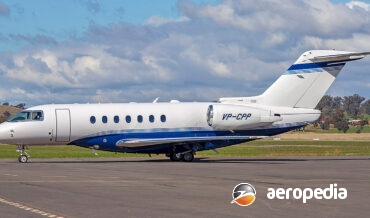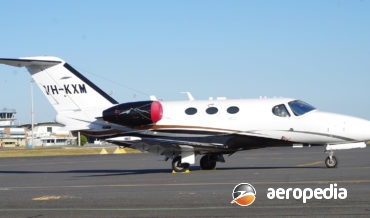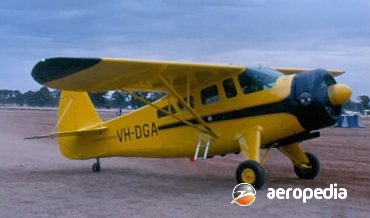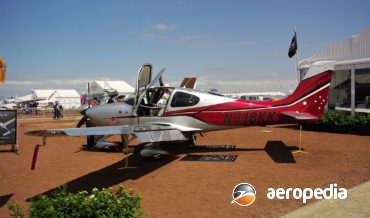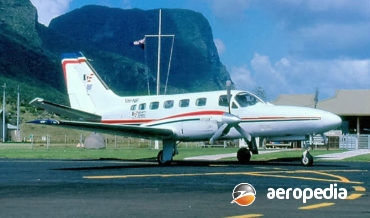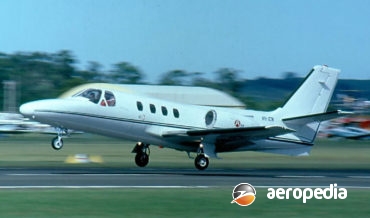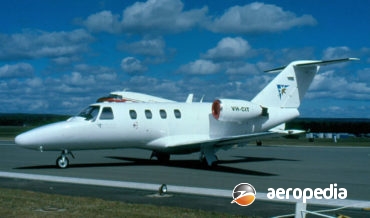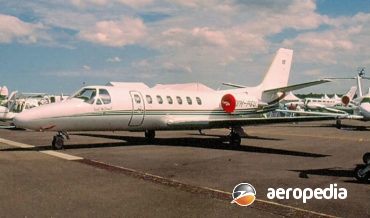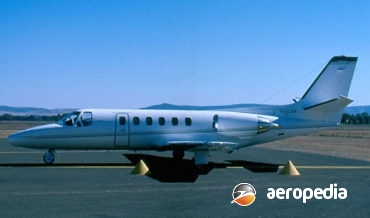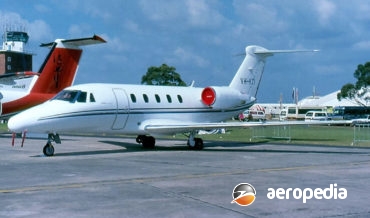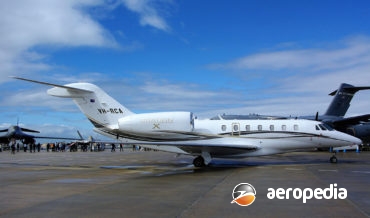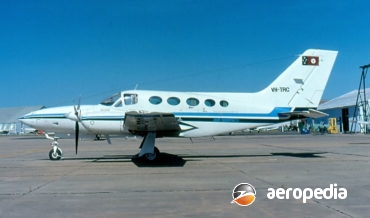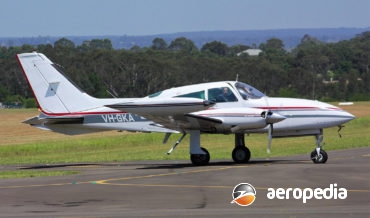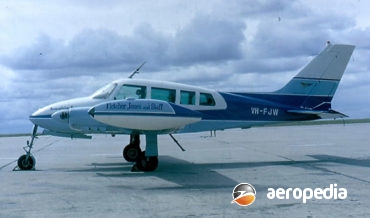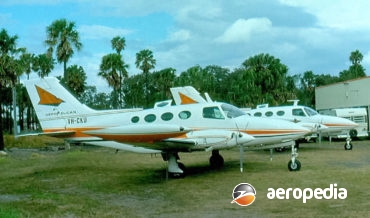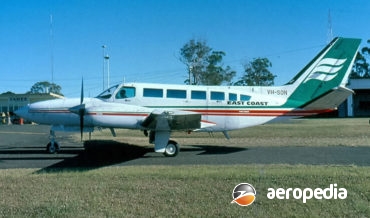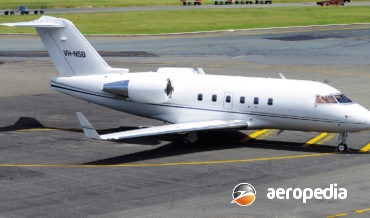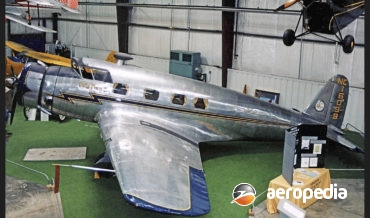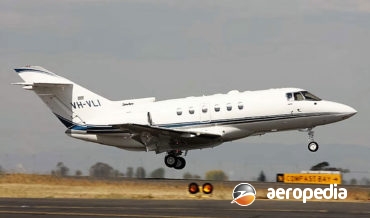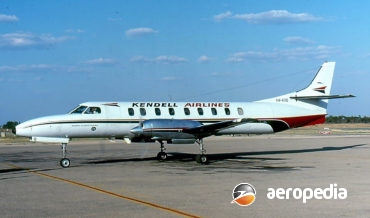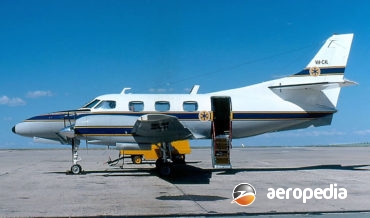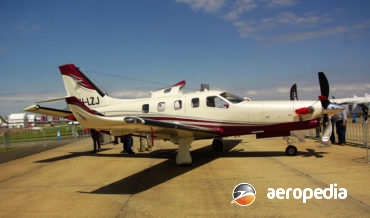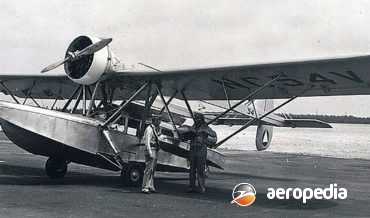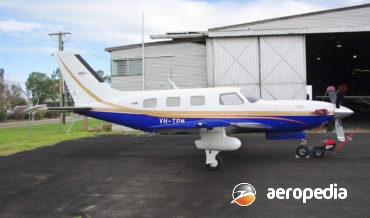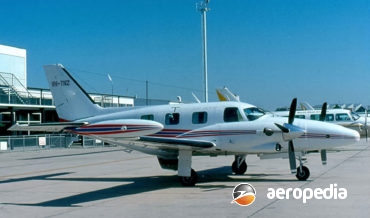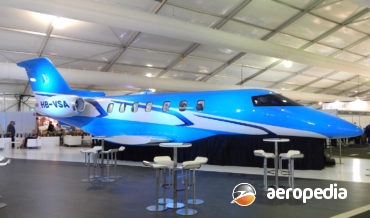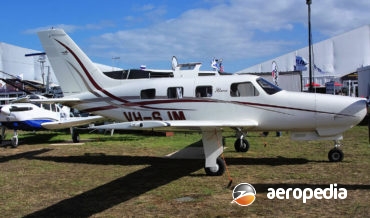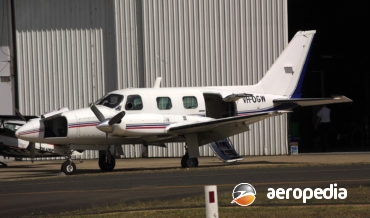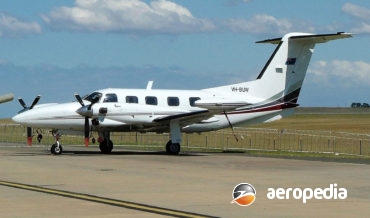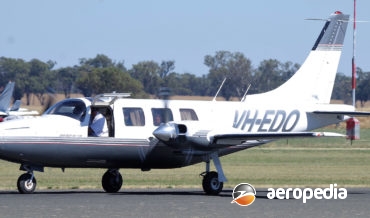All Contents
Contents
Photograph: Hawker 4000 CP-CPP (c/n 7625) at Wagga Wagga, NSW, in May 2019 (Robert Myers) Country of origin: United States of America Description: Business and executive aircraft Power Plant: Two 6,900 lbst Pratt & Whitney (Canada) PW308A turbofans Specifications: Wingspan: 18.82 m (61 ft 9 in) Length: 21.18 m (69
David C. Eyre
- November 26, 2020
On 8 September 2006 the Cessna Aircraft Company was granted a type certificate for the Citation Mustang, the Model 510, making it the world’s first fully-certified, new-generation entry level business jet.
David C. Eyre
- March 23, 2020
In 1980 the Cessna 425 Corsair was introduced to the Cessna range. Based on the airframe of the Model 421 Golden Eagle, the Corsair was fitted with Pratt & Whitney PT6A turboprops.
David C. Eyre
- March 23, 2020
The DGA-15 was the last of a series of high-performance monoplanes built by Howard Aircraft Corp at St Charles, Illinois in the United States.
David C. Eyre
- August 24, 2019
On 24 February 2015 Cirrus Aircraft launched a variant of the SR22 specifically tailored to Australian conditions. Called the Australis the first example of the aircraft (N318KK) flew into Australia in mid-February 2015 and was placed on display at the Australian International Airshow at Avalon.
David C. Eyre
- May 17, 2019
The first turboprop business aircraft added to the Cessna range, the Conquest was designed as an intermediate-sized aircraft between the company’s piston-engine twins and the turbofan-power Citation series. The prototype flew for the first time on 26 August 1975, and the first production machine was delivered on 24 September 1977.
David C. Eyre
- May 17, 2019
On 7 October 1968 Cessna unveiled a full-scale mock-up of a new eight-seat pressurised executive jet aircraft, known as the Fanjet 500 to delegates at that years National business Aircraft Association convention at Houston, Texas. The aircraft was designed to operated from most airfields used by light and medium twin-engined
David C. Eyre
- May 17, 2019
The Cessna 525 CitationJet was announced at the National Business Jet Association convention in 1989 as the company’s replacement for the Cessna 500 Citation and Citation I series and the first flight of the prototype (N525CJ) was made on 29 April 1991, the second prototype flying on 20 November that
David C. Eyre
- May 17, 2019
The Cessna 560 Citation series was introduced to the Cessna range at the BBAA convention in New Orleans in 1987, theprototype Citation V (N560CC) flying in August that year. The largest of the straight wing members of the Citation series, it has been produced in three models, the Citation
David C. Eyre
- May 17, 2019
Continued development by Cessna produced the Citation II, which was larger, faster, climbed more quickly, cruised at higher altitudes, and ranged further than earlier Citation models.
David C. Eyre
- May 17, 2019
Although receiving the designation “Citation” in the Cessna corporate jet series, the Citation II was a completely new design which had no commonality with the earlier series,
David C. Eyre
- May 17, 2019
The Cessna 750 Citation X series was announced in October 1990, at the US NBAA annual conference, testing of the engine taking place initially on a citation VII testbed (N650) in August 1992.
David C. Eyre
- May 17, 2019
Designed as a replacement for the Cessna 411, the prototype of the Model 421 was flown for the first time on 14 October 1965. The maindifferences between the 421 and the 411 were the up-rated engines and pressurised cabin of the new model, thus permitting it to cruise at
David C. Eyre
- May 17, 2019
Production deliveries of the Cessna 310 series of light, twin-engine, executive aircraft commenced in 1954 from the Cessna Aircraft co plant at Wichita, Kansas,
David C. Eyre
- May 17, 2019
Produced from 1962 to 1968, with a total of 579 aircraft being completed, the Model 320 Skynight was an all-metal, five-seat, executive,
David C. Eyre
- May 17, 2019
Development of the Cessna 340 series was initiated in 1969 but, because the prototype was lost during test flying in 1970, trials were delayed and deliveries of production
David C. Eyre
- May 17, 2019
The prototype Cessna 401 was flown for the first time on 26 August 1965. Designed as a lighter and cheaper version of the Cessna 411, the 401 was aimed at the business and executive market but, in its developed form, the type was used in the commuter airliner role.
David C. Eyre
- May 17, 2019
Following commencement of delivery of production aircraft late in 1976, the Model 404 Titan was offered in a range of variants designed specifically to meet the needs of businessmen and commuter airlines which required a large twin-engine aircraft with normally aspirated engines rather than turbines.
David C. Eyre
- May 17, 2019
In 1965 the Cessna 411 was introduced to the Cessna range as a twin-engine executive aircraft to compete again the Beechcraft Queen Air and the Aero Commander series. One of Cessna’s first ventures into the commuter aircraft market, the aircraft had the cabin separated from the passenger compartmentby a divider,
David C. Eyre
- May 17, 2019
One of the newer era of modern technology high-performance long-range executive jets, the prototype of the series, the CL-600 Challenger, was flown for the first time on 8 November 1978 powered by 7,500-lb st Avco Lycoming ALF 504L turbofans.
David C. Eyre
- May 17, 2019
The prototype V.1 (NR12293) with a 531-kw (712-hp) Wright R-1820-F2 engine was first flown on 19 February 1933 and production totalled 26 aircraft.
David C. Eyre
- May 8, 2019
Following the success of the Dove a number of companies sought to improve the product to increase performance.
David C. Eyre
- May 8, 2019
Following the success of the Hawker Siddeley HS-125 series over the years British Aerospace, which acquired the interests of Hawker Siddeley, announced the launch of two new models, the Model 800 and 1000, the prototype of the new series, the British Aerospace 125-800 featuring a number of improvements over its
David C. Eyre
- May 8, 2019
The Swearingen series of aircraft achieved prominence when a Merlin III won the 9,414 km (5,851 miles) trans-Atlantic London – Victoria (British Colombia) Air Race in 1971.
David C. Eyre
- May 8, 2019
The Merlin III is an eight/eleven seat executive transport designed by Ed Swearingen to offer an aircraft which can travel almost at jet speeds whilst consuming less than half the fuel that a jet business aircraft would require for the same distance.
David C. Eyre
- May 8, 2019
The TBM-900 is a development of the business and executive / utility aircraft series produced in France since it was introduced to the market in 1990, examples being operated over the years by the French Arm and Air Force, with 324 TBM-700s being delivered, followed by 338 TBM-850s, being replaced
David C. Eyre
- May 8, 2019
The Aerostar series of light aircraft was designed by the late Ted Smith, who first became well known in aviation circles in the USA for designing the Aero Commander series of light business twins.
David C. Eyre
- May 8, 2019
Following the success of the S-38 series, Sikorsky designed the S-39 specifically aimed at the sportsman pilot, the first production S-39A being flown in the National Air Tour of the United States in 1930.
David C. Eyre
- May 8, 2019
With numerous Piper Apaches and Aztecs having been adapted for commuter airline type work in the early 1960s, it was expected, when Piper unveiled the Navajo as the first of a new breed of twins, that variants would be built to meet the needs of the growing commuter market.
David C. Eyre
- May 8, 2019
The Malibu was introduced to the range of single-engine aircraft produced by the Piper company in August 1982 as a competitor for the very successful Cessna P210 Centurion series which, up to that time, was the only pressurised single-engine cabin monoplane available on the market.
David C. Eyre
- May 8, 2019
The Malibu Meridian was launched in 1997 at the National Business Aviation Association Convention in Dallas, Texas when a fuselage mockup was displayed.
David C. Eyre
- May 8, 2019
The Cheyenne was a development of the pressurised Piper Navajo, as indicated by the common PA-31 type number, but was fitted with turboprop engines.
David C. Eyre
- May 8, 2019
To meet the needs of commuter airlines which, for some years, used Piper Navajo type aircraft, and which may seek to move up to turbine power in place of the piston-engined type,
David C. Eyre
- May 8, 2019
Pilatus Aircraft Ltd was founded in 1939 and since then has operated from Stans, Switzerland, and has been the only Swiss company to develop, produce and sell aircraft to customers around the world, ranging from military trainers to now, a business and executive jet.
David C. Eyre
- May 8, 2019
Continuing its line of small to medium high-performance single-engine business and executive aircraft, in October 2007 Piper announced it was producing a new model of the Malibu series initially known initially as the Malibu Matrix but later becoming known as the Matrix.
David C. Eyre
- May 8, 2019
The Mojave was designed by Piper to carry a crew of two with dual controls, and five passengers in the main cabin.
David C. Eyre
- May 8, 2019
The Seneca was developed from the Piper Cherokee Six series, basically being a twin-engine version with the fuselage of the Cherokee Six using the Cherokee Six’s wings, horizontal tail and fuselage, standard single and optional double rear loading doors and single front door, with a new wing centre section so
David C. Eyre
- May 8, 2019
With a flight crew of two on a separate flight deck, and normal accommodation for six to nine persons in the cabin, the Piper Model PA-42 Cheyenne III, introduced in 1979, became the largest aircraft of the Piper range.
David C. Eyre
- May 8, 2019
When introduced to the Piper range in 1979, the Malibu was the only production six-seat pressurised single-engine business aircraft.
David C. Eyre
- May 8, 2019
The prototype of the Smith Aerostar series, known as the 320, flew for the first time in November 1966 powered by two Lycoming IO-320 engines but as time went by more powerful engines were fitted to new models to increase performance.
David C. Eyre
- May 8, 2019
Recent Comments
Archives
Categories
- No categories
Categories
- No categories
Latest Posts
Newsletter

